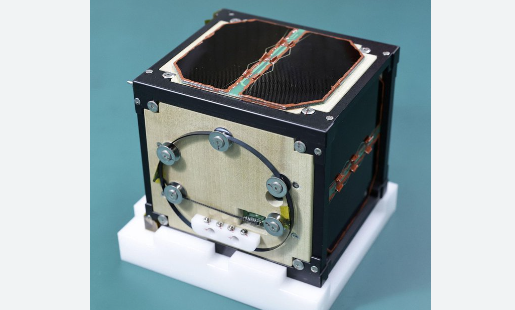LignoSat: First Wooden Satellite Launches for Space Testing
On November 5, 2024, the world witnessed a groundbreaking event. The first wood-panelled satellite, named LignoSat, was launched into space. This tiny spacecraft aims to explore the viability of timber as a renewable building material for future space missions. Developed by Kyoto University in collaboration with Sumitomo Forestry, LignoSat arrived at the International Space Station (ISS) aboard a SpaceX Dragon cargo capsule.
What is LignoSat?
LignoSat is a compact satellite measuring just 10 centimetres on each side and weighing 900 grams. It is constructed from panels made of magnolia wood. The design employs traditional Japanese craftsmanship without screws or glue. The name “LignoSat” derives from the Latin word for wood, denoting its unique composition.
Purpose of the Mission
The mission aims to test wood’s durability in the harsh conditions of space. Temperatures in space can swing dramatically, ranging from -100 to 100 degrees Celsius every 45 minutes. LignoSat will also assess wood’s effectiveness in shielding semiconductors from space radiation.
Historical Context of Wood in Aviation
Wood has a historical precedent in aviation. Early 1900s aircraft were primarily built from wood. Experts believe that a wooden satellite is feasible, given advancements in materials science. Additionally, cork has been used in spacecraft to protect them during re-entry into Earth’s atmosphere.
Advantages of Wood in Space
Researchers argue that wood may outperform metals in space. Unlike on Earth, wood does not rot or ignite in the absence of water and oxygen. This characteristic could enhance the longevity of wooden structures in space environments. The team at Kyoto University envisions planting trees and constructing wooden habitats on the Moon and Mars within the next 50 years.
Environmental Benefits
Conventional satellites, primarily made of aluminium, contribute to environmental issues. They often burn up upon re-entry, releasing harmful aluminium oxides that damage the ozone layer. LignoSat, made from renewable wood, presents a more sustainable alternative. It aims to reduce pollution when it eventually falls back to Earth.
Composition of LignoSat
While LignoSat features wooden panels, it is not entirely made of wood. The satellite incorporates traditional aluminium structures and electronic components encased in wood. Its sensors will monitor how the wood behaves in the extreme conditions of space over a six-month orbital period.
Future Implications
The findings from LignoSat could revolutionise space exploration. If successful, wood might replace some metals in satellite construction, leading to more sustainable practices. Researchers hope this initiative will pave the way for future timber-based habitats beyond Earth, addressing long-term challenges in space colonisation.
Important Facts for Exams:
- LignoSat: LignoSat is the first wooden satellite launched to test timber’s viability in space. It weighs 900 grams and measures 10 centimetres on each side.
- Kyoto University: Kyoto University is a leading research institution in Japan. It focuses on various fields including space science and forestry. The university collaborates with industries for innovative projects.
- Takao Doi: Takao Doi is a Japanese astronaut and researcher. He studies human space activities at Kyoto University. Doi has previously flown on the Space Shuttle.
Month: Current Affairs - November, 2024
Category: Science & Technology Current Affairs


